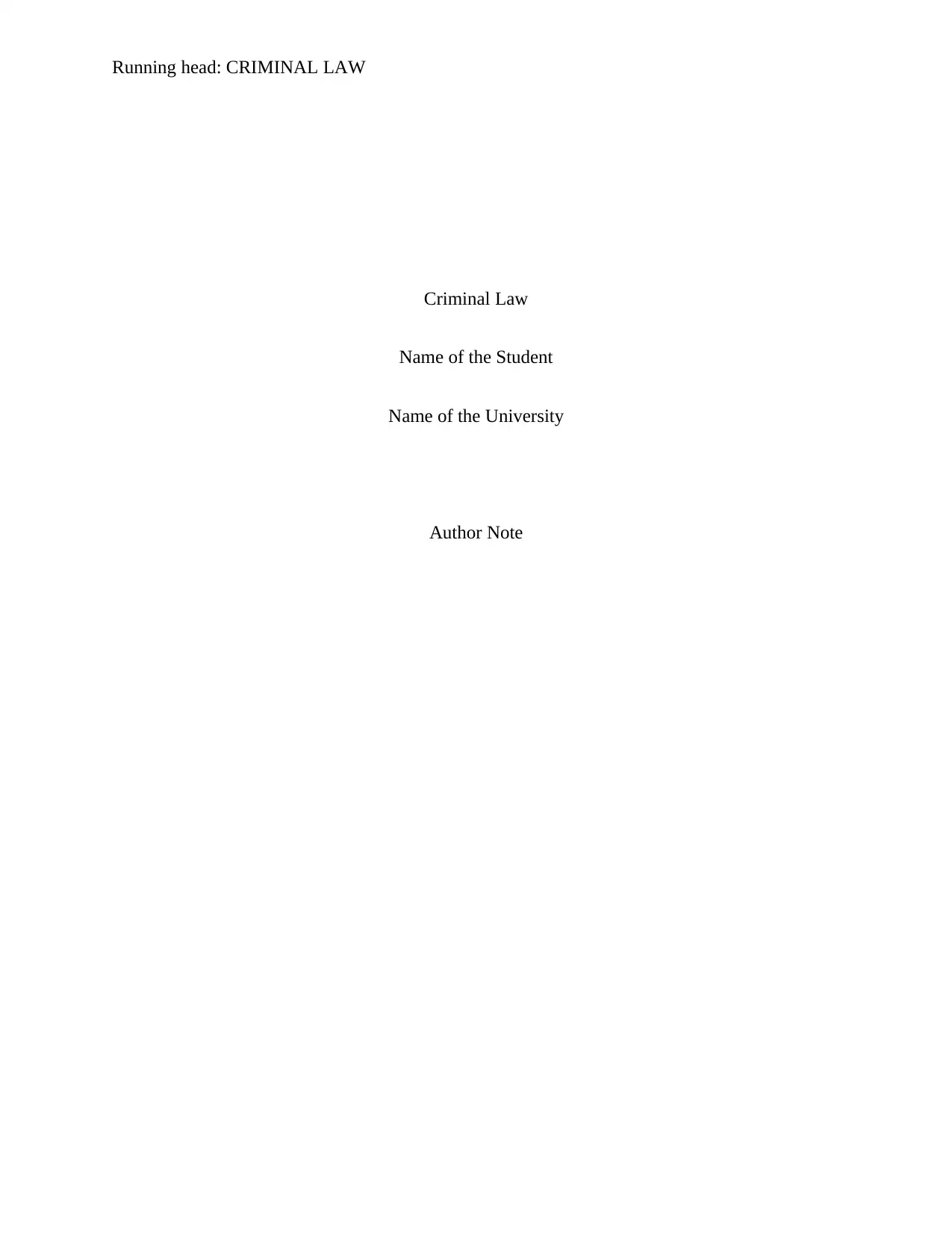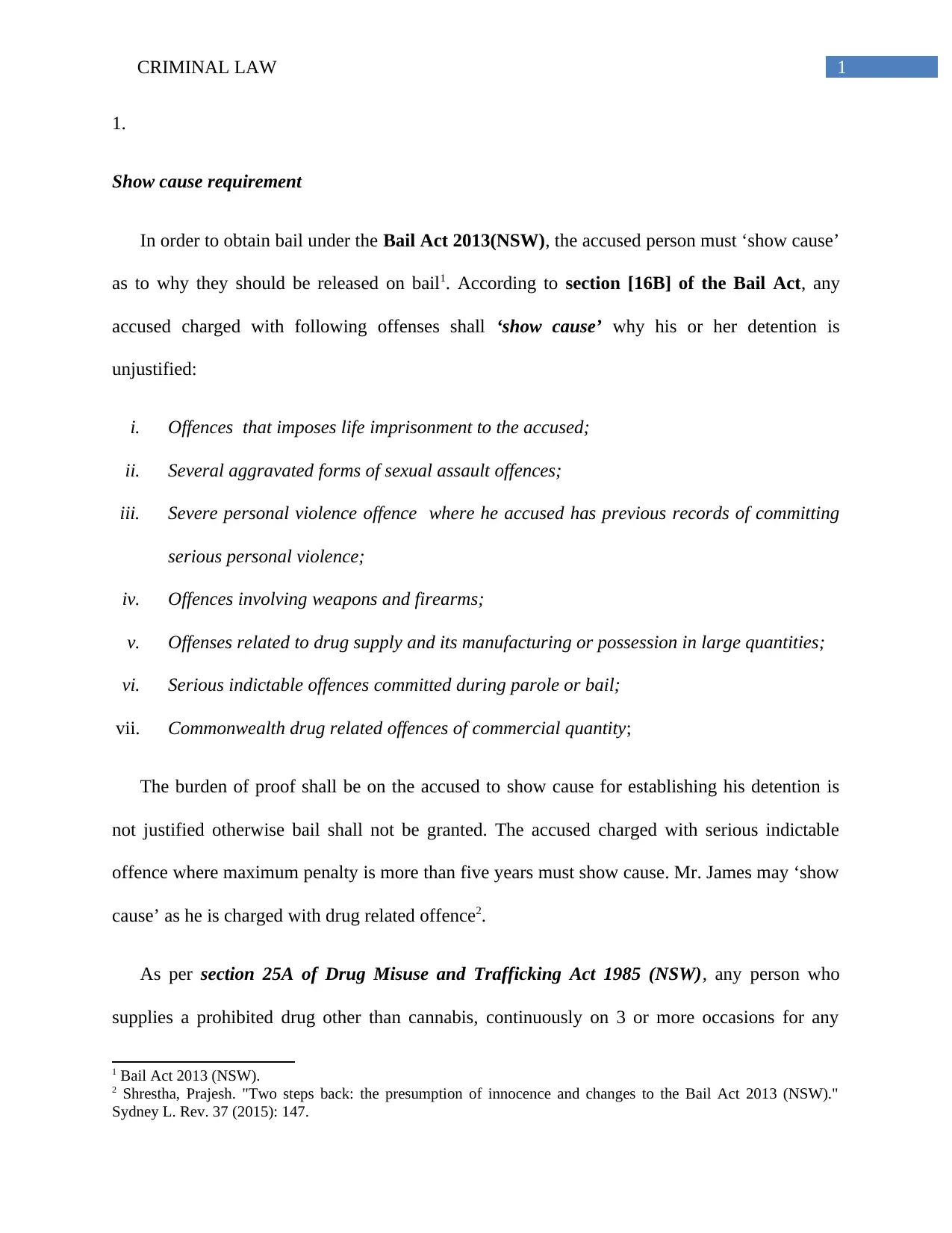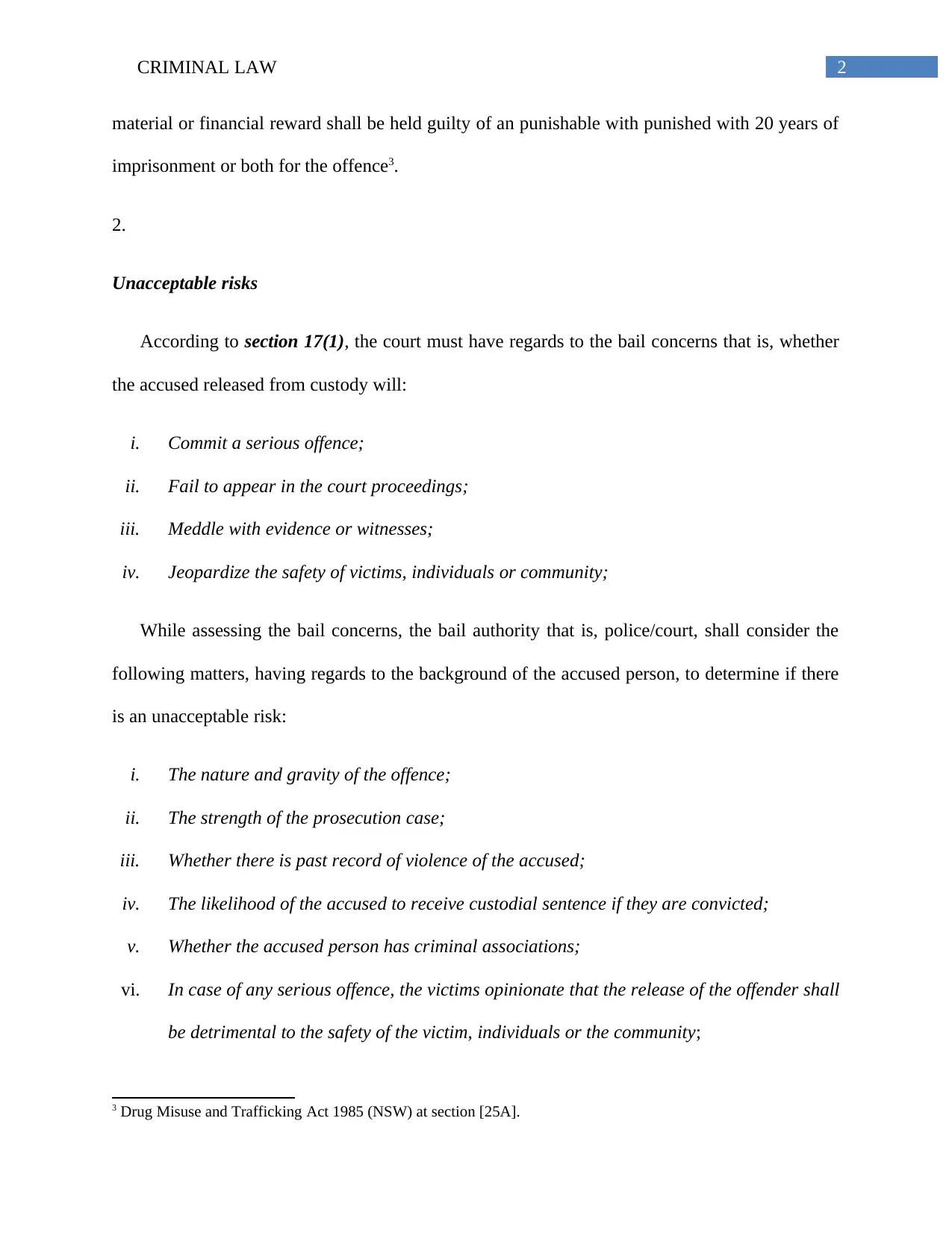Criminal Law Assignment: Bail Act, Drug Offences, and Show Cause
VerifiedAdded on 2021/04/16
|5
|693
|73
Homework Assignment
AI Summary
This Criminal Law assignment analyzes key aspects of the Bail Act 2013 (NSW) concerning bail eligibility and conditions, specifically focusing on the 'show cause' requirement for drug-related offenses. The assignment examines how the accused must demonstrate why their detention is unjustified, particularly under section 16B of the Bail Act, which applies to serious offenses like those involving drug supply. It also explores the concept of 'unacceptable risks' as defined in section 17(1), which the court considers when deciding whether to grant bail. This includes assessing the nature of the offense, the strength of the prosecution's case, and the accused's background. The assignment also outlines various bail conditions that may be imposed, such as conduct-related conditions, enforcement conditions, accommodation conditions, and security conditions, as per sections 25, 30(5), 28, and 26 of the Bail Act, respectively. The analysis incorporates relevant case law and legislation, providing a comprehensive understanding of the bail process in relation to drug-related offenses.
1 out of 5












![[object Object]](/_next/static/media/star-bottom.7253800d.svg)